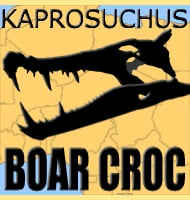Eopteranodon
In Depth Eopteranodon gets its name from how its jaws and crest look like those on the more famous pterosaur Pteranodon that existed later in the Cretaceous of North America. Eopteranodon however was not only much smaller than Pteranodon but it is actually of a different pterosaur family. Further Reading Further reading- New pterodactyloid pterosaur … Read more
